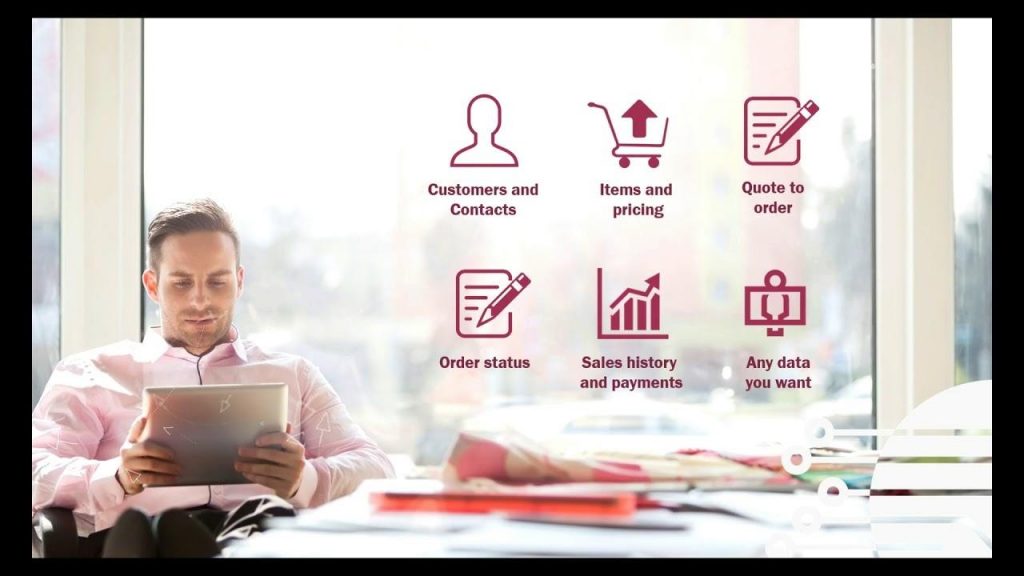The sales force automation (SFA) market continues to grow with billions more in revenue at its disposal each year. Ecommerce and other vendors are able to improve their forecasting of the industry and guide their selling behavior to stimulate growth through Salesforce integration with legacy systems like Microsoft Dynamics NAV as Salesforce.
For businesses using Microsoft Dynamics and Salesforce, the primary attribute that’s so sought after is opportunity production. Businesses are actually able to discover and act on new possibilities for their organization by managing, reporting on, and forecasting with their data in ever more valuable ways. This all happens by connecting all kinds of systems with advanced, often third-party tools like RapidiOnline.
Very simple, clients of Rapidi use integration to share information and make sure they are closely following customers, sales, marketing, trends, and every facet of their business with the highest precision. The data itself is valuable, but with the newfound connections within their ecosystem, ecommerce and other industry players can gain ground and promote market leadership.
Read on to reveal how Microsoft Salesforce automation and integration can rejuvenate your business’ vision of the future. See new opportunities, and leverage your data for competitive success.
Table of Contents
How Microsoft Salesforce Automation Works in Ecommerce and More
By helping each team and business perform better—Microsoft with Salesforce pushes limits. Its abilities can go even further than Salesforce and Dynamics on their own through integration—a task that’s easier than you might think with a third-party, cloud-based solution.
Let’s explore how each element in the automation process can be changed and affected by cloud integration, bringing a number of advantages within each category. The process of integration turns out to not only connect disparate warehouses of data and reduce inefficiencies in tasks, but it also helps to empower your teams and satisfy customers.
Data
Applications like Salesforce and Dynamics NAV can be integrated in several ways, and some choose to connect these systems with informal fixes. Others, unfortunately, rely on manual data entry from system to system to simulate the process of integration through paid hours and laborious, error-ridden effort.
The better option is for businesses and ecommerce organizations to connect data automatically through liberating automation. It saves time, it conserves money, and it grows the business by making it not only faster but also more accurate and timely. Scaling is possible simply by automating data transfers between apps.
Tasks
By integrating Dynamics and Salesforce, there is no longer the need to task anyone with the manual integration of the two essential systems. Instead, you can use a preconfigured template to synchronize and transfer information, making more time for truly necessary tasks that don’t consume resources needlessly.
Then, leadership is also saved time and given over to more core functions when they’re not consumed with making and managing those manual tasks. They are able, instead, to use more available, consistent, and complete data to make the decisions that steer their departments and influence the overall success of the enterprise.
Teams
When teams are connected through the cloud with integration, they can access all the value and insight within a CRM like Salesforce as well as Microsoft Dynamics in either direction. Whether they have a marketing, sales, or leadership function, the correctness and real-time relevance of information makes for more profound success.
Being able to report on and retrieve data more readily and from almost anywhere translates into more informed action. Without the need to synchronize data, workforces can collaborate together more effectively whether they are remote or on-site. Since everyone is contributing from the same source of truth, they are more effective at creating work products that power the business rather than slow it.
Customers
Integration can mean the difference between a good experience and a bad one. Just as integration creates a smoother, simpler, and more satisfying experience of work behind the scenes, it also helps customers feel comfort in doing business with you. At every touchpoint, integration helps keep client experiences positive.
As you discover opportunities and create a single source of truth, you also improve your ability to market to customers and push relevant content at the right time. In sales, lead conversion is improved as poor prospecting time gets cut. Even in production with CRMs communicating with other logistic and financial systems, you can follow flows right down to production, delivery, feedback, and finance in real-time.
Integrate Salesforce with Microsoft through RapidiOnline
Rapidi is ready. They’ve developed a preconfigured, out-of-the-box solution to connect your disparate data warehouses into a cohesive machine that creates community and customer success. Bring benefits to your time, teams, and touchpoints, and learn about RapidiOnline —a tool that can help you synchronize and scale.


